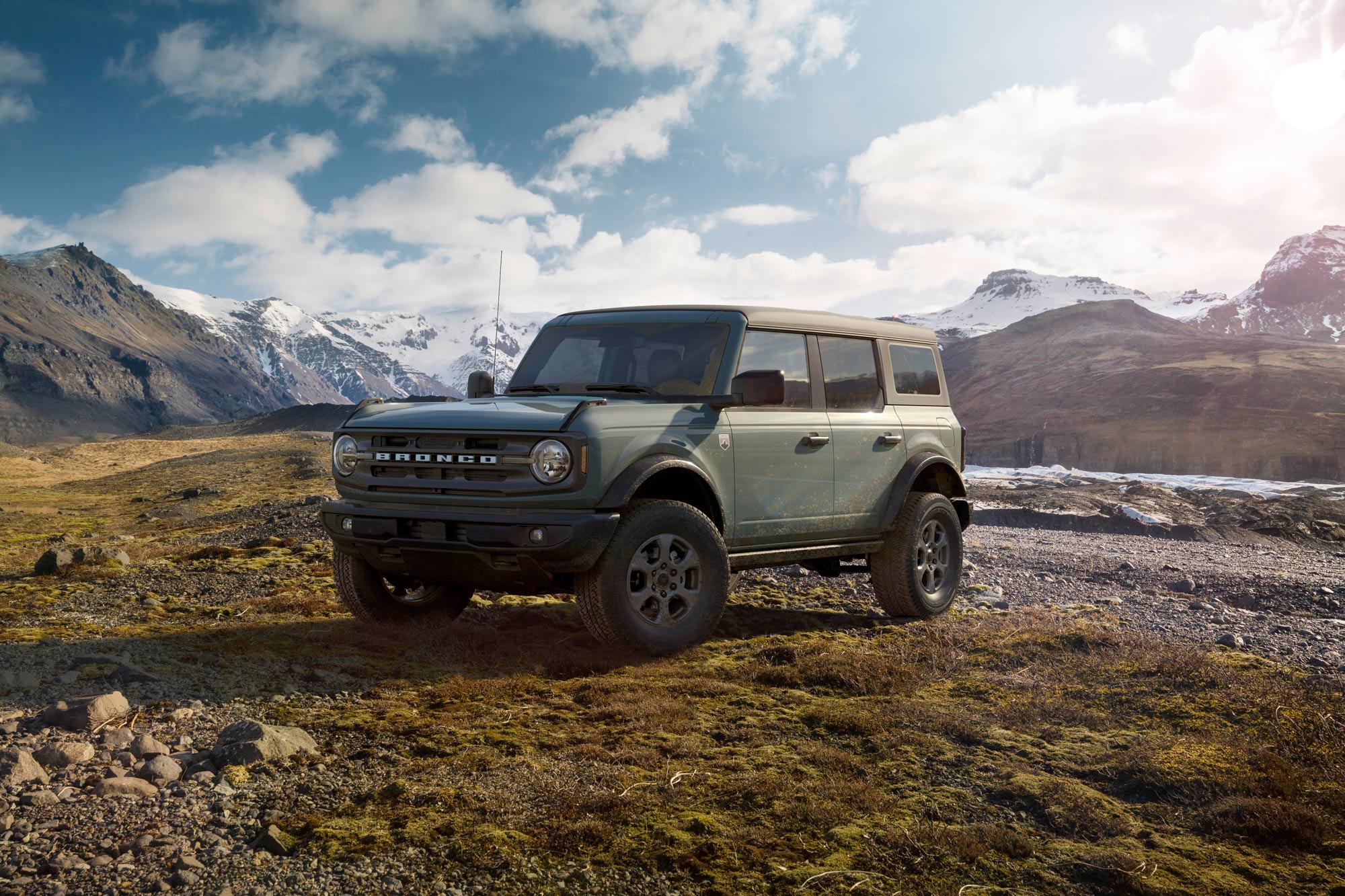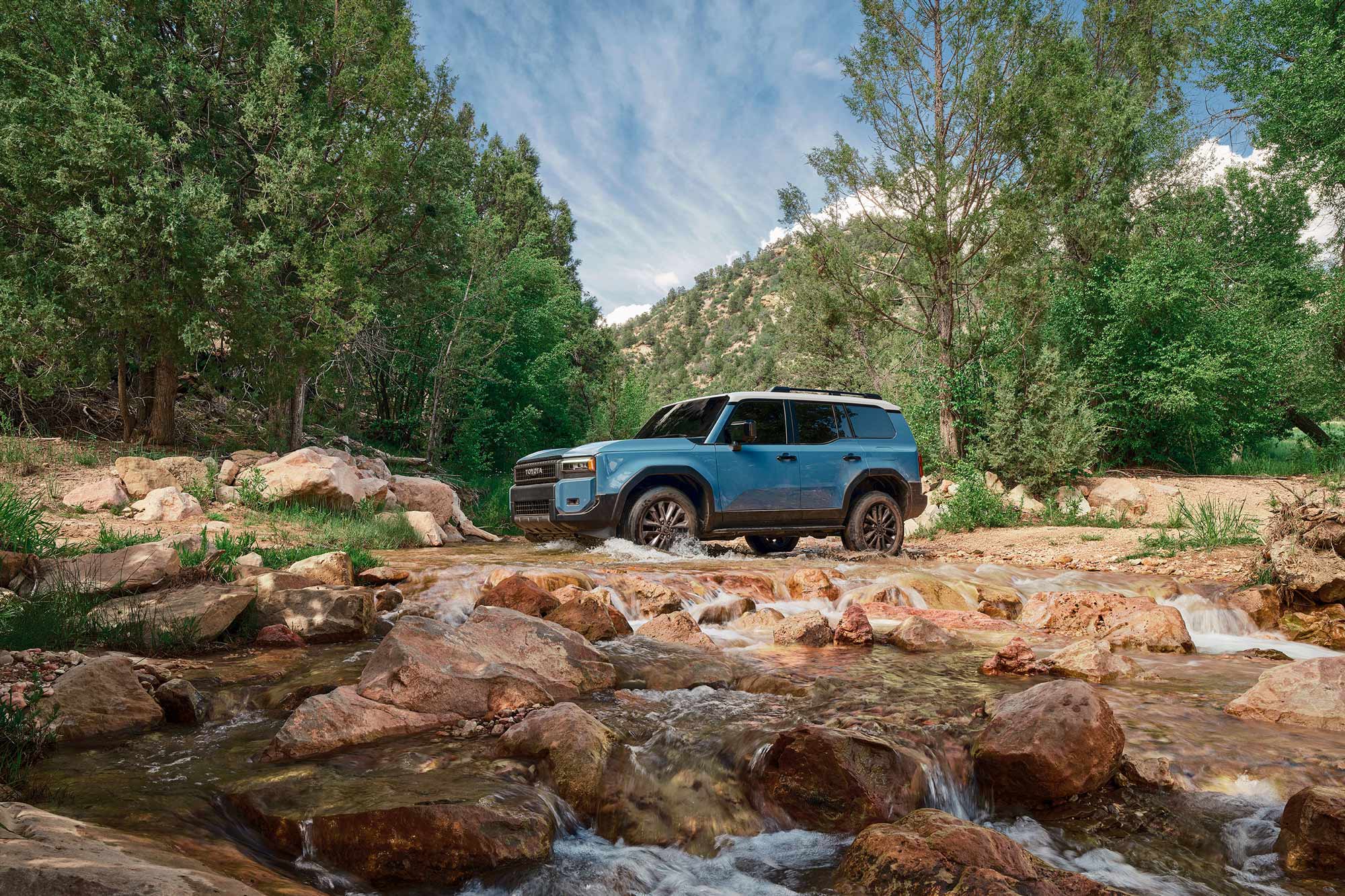How Base Models Have Become Cool
Some consumers are seeking out entry-level iterations of popular vehicles.
 Ford
Ford
More than five years ago, there was little prestige in the entry-level or base model of any given new vehicle. A low-priced new car appealed to dealers, who might advertise such a model with a low monthly lease or purchase price to lure shoppers into the showroom.
But a bare-bones 2018 Nissan Versa was not very compelling to buyers, aside from its position as the least expensive new vehicle a U.S. consumer could purchase at the time. It didn't even have power windows or door locks.
Now, we find automotive enthusiasts in online forums singing the praises of basic, starter-level models of popular vehicles such as the Ford Bronco and Land Rover Defender. Suddenly, steel wheels, cloth seats, and unpainted bumpers are appealing.
The Pandemic Changed How We Shop for Cars
During the COVID-19 pandemic, supply chain issues produced significant shortages of key parts necessary for manufacturing new cars. This crisis limited the inventory of available vehicles, raising prices, supply and demand being what they are. The average new-car transaction price soared by more than $10,000 from pre-pandemic levels.
As dealers tacked on premiums and carmakers focused their production on more expensive models, per-vehicle sale profit increased. Most new cars on dealer lots cost on average nearly $50,000, while pre-pandemic new-vehicle buyers had been able to choose from around a dozen vehicles priced at less than $20,000.
In response to this narrow inventory of higher-priced vehicles, many who didn't need a new car immediately began exploring build-to-order offerings, customizing vehicles online through manufacturer configurators with the exact features, color, and trim they wanted. So, instead of searching for that elusive, less expensive base vehicle, consumers found that they could just order a car and wait for it to appear. And save thousands of dollars in the process.
Of course, dealers have found a way to capitalize on this.
"Sure, dealers will absolutely allow you to order this base vehicle," said Alexander Edwards, CEO of Strategic Vision, an automotive research and consulting agency. "And will sell it to you with an extra $3,000 to $10,000 markup."
The Upward March of the Base-Model Car
Base-model vehicles have also taken a voyage of their own in recent years, acquiring additional content — power windows and locks, big LCD screens (requisite for the government-mandated backup cameras), and plenty of USB plugs — designed to meet the core needs of contemporary consumers.
"Even in that base model, they're really trying to provide as much good stuff there as possible," Edwards said. "I genuinely believe the base-model game has completely changed, and we're not going to be seeing vehicles that really are basic anymore. They are going to come with standard features that are at the very least nicely equipped, and then they're going to add on even more features so that they can increase the profit."
This trend partly began as a means for low-cost manufacturers to lure consumers into their showrooms by piling on additional features for a competitive price.
"Brands like Hyundai and Kia, over the past couple of years, have shown that base no longer is base," Edwards said. "Their entry-level vehicle models are really providing so many features that they're very competitive. So when someone asks whether I want a BMW X5 or a Kia Telluride just based on the features, the Telluride looks pretty positive."
 Toyota
Toyota
Base Models Can Offer Special Features
Features compelling to specific niche segments of the auto-buying public are sometimes only available in entry-level configurations of popular models. For example, to those who enjoy the engagement, control, and sporty feeling of shifting gears, a manual transmission can be had on the Ford Bronco only in base-engine configurations.
The Toyota Land Cruiser has retro-inspired rounded headlights and 1980s-esque cloth seats, only available together in the first rung, heritage-themed 1958 version. When Land Rover reintroduced its Defender for 2020, the base version came with painted steel wheels, and it could even be had with a bench seat up front, two decidedly throwback features not normally associated with $50,000-plus price tags.
These features are appealing because they are a means to get into a popular model for less money. They are also a draw because they can be more durable and less fussy in ways that don't detract from the experience of enjoying these vehicles.
"Do people want less stuff? The answer is no. They don't want less stuff," Edwards said. "People want to have a reasonable amount of stuff that looks innovative, that looks thoughtful, and that actually does positive things for them."
Nostalgia Draws Base-Model Buyers
The desire for a less cluttered, less technical, easier-to-maintain vehicle is part of a nostalgia play at the root of much of the base-model trend. All vehicles mentioned here are off-road-friendly trucks and SUVs with compelling vintage nameplates that go back five decades or more.
This longing for vehicles that recall the past while sporting the relevant amenities of the present is one of the reasons why manufacturers have brought out new iterations of these vehicles.
"I could actually get hundreds of stories from people who go into very clear detail how important nostalgia and those positive memories associated with these brand names are," Edwards said. "Now, do they want the same features as 40 years ago? There might be a few moments where they go, yeah, that could be sort of nice. But if they were ever to actually get back in that vehicle, they would go, oh, well, I wouldn't want to pay $30,000 for this. Give me the features."
Edwards sees this as the core of a trend toward base models.
"Hey, give me something basic so I can show off or feel more authentic," he said, "so long as the features in the vehicle do something that truly benefits the consumer."
Written by humans.
Edited by humans.
 Brett Berk
Brett BerkBrett Berk is a New York City-based writer who covers the intersection of cars and culture: art, architecture, books, fashion, film, politics, television. His writing appears regularly in top-tier automotive and lifestyle publications.
Related articles
View more related articles